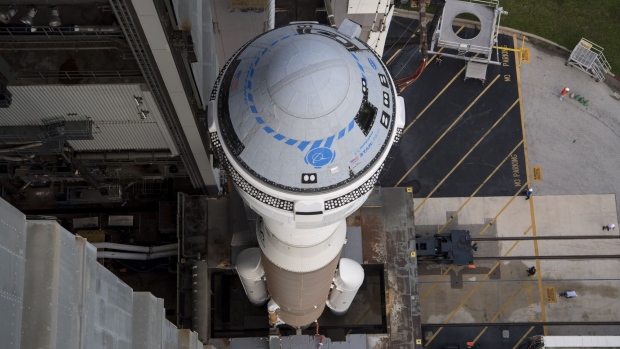Oct 8, 2021
Boeing Zeroes in on Cause of Sticky Valve in Starliner Craft
, Bloomberg News

(Bloomberg) -- Boeing Co. is closing in on the root cause of a faulty valve issue that halted a high-profile test flight of its Starliner spacecraft in August, the company and NASA wrote in a joint blog post Friday.
The space agency and the Chicago-based manufacturer are assessing potential launch windows in early 2022 for the unmanned flight, a critical test before the Boeing capsule can begin hauling U.S. astronauts to the International Space Station.
The aerospace giant’s engineers are focused on “oxidizer and moisture interactions” as the “most probable cause” of the stuck valves that were discovered on the capsule after it was buffeted by heavy rain while on a Florida launch pad. All but one of the 13 closed valves are functioning following troubleshooting on the pad, the launch complex and inside Boeing’s Starliner production factory at Kennedy Space Center, according to the post.
Boeing is studying several options for the service module, the expendable stage that houses the stuck valves and uses 20 Aerojet Rocketdyne engines to maneuver in orbit. These range from “minor refurbishment” of current components to using another service module that is already being manufactured.
The company has been working to convince NASA that the Starliner can safely and reliably ferry crews to the International Space Station after its craft missed a rendezvous with the orbiting lab during a botched 2019 flight. Boeing spent months redesigning Starliner’s software systems after the failed attempt. It’s also footing the bill for the do-over orbital flight, and took a $410 million accounting charge in January 2020 to cover the costs.
Earlier this week, NASA reassigned two astronauts training for the Boeing vehicle to SpaceX, citing persistent delays for a contract that is years behind schedule.
©2021 Bloomberg L.P.